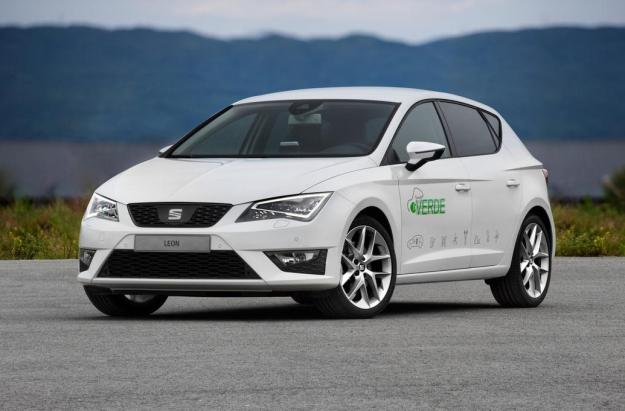 With cars like the XL1 and Audi A3 e-tron already in the portfolio, Volkswagen has decided to give its Spanish division, SEAT, a green car of its own.
With cars like the XL1 and Audi A3 e-tron already in the portfolio, Volkswagen has decided to give its Spanish division, SEAT, a green car of its own.
The Leon Verde (Spanish for green) is a prototype plug-in hybrid based on SEAT’s compact Leon hatchback. It’s the result of a four-year development project called Cenit Verde (“Green Zenith”).
Except for the stickers, the Leon Verde looks the same as a production Leon, but underneath it’s a different story.
Under the hood is a 120 horsepower 1.4-liter four-cylinder gasoline engine, which works with a 100 hp electric motor to bring the total system output to a respectable 220 hp. A lithium-ion battery pack mounted under the floor provides the electricity.
The result is a maximum electric-only range of 31 miles and an estimated 146 mpg on the European cycle. That’s pretty close to the Leon’s cousin, the A3 e-tron, which has an identical 31-mile electric-only range and gets an estimated 156 mpg on the European cycle,

While the EPA and European fuel economy tests can’t be directly compared, it’s worth noting that the SEAT’s electric-only range bests the Ford Fusion Energi and C-Max Energi’s 21 miles, the current standard for plug-ins sold in the United States.
However, the Leon Verde won’t get the chance to face off against any Audis or Fords for fuel economy supremacy. SEAT says it’s a one-off experimental prototype and that there are no plans to put it into production anytime soon.


